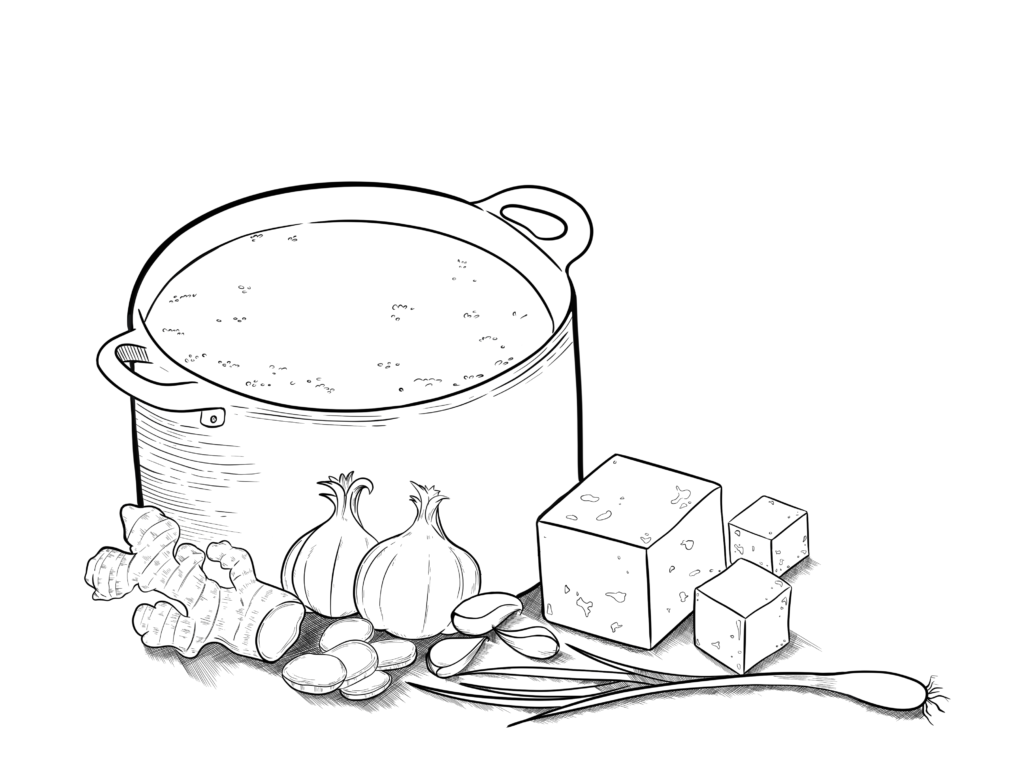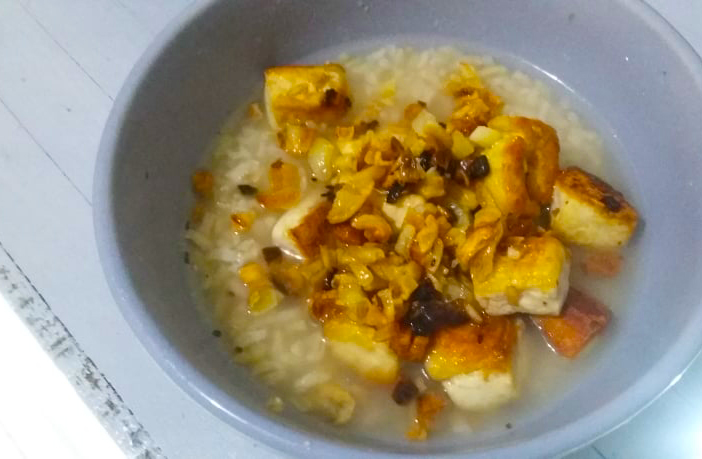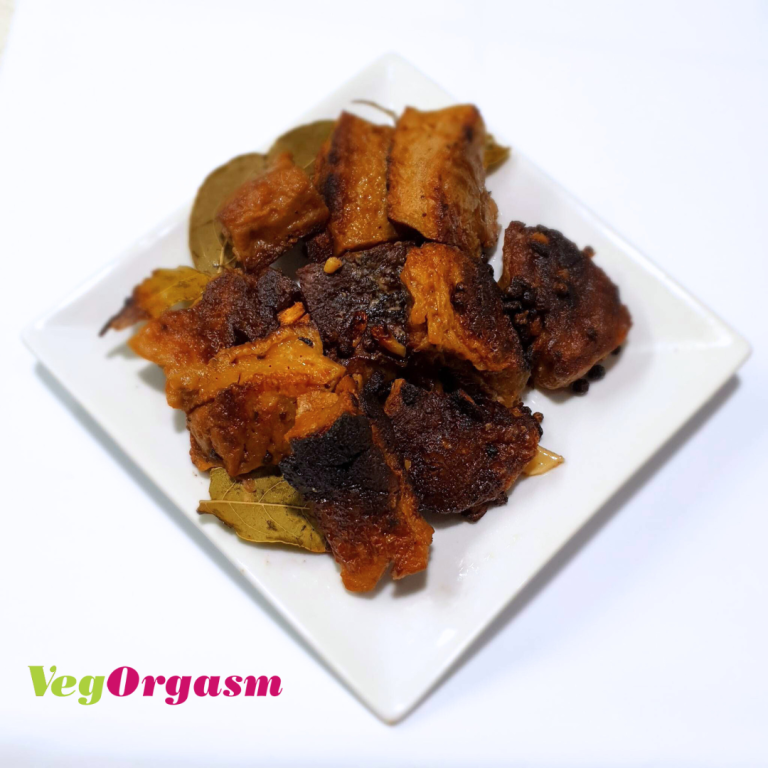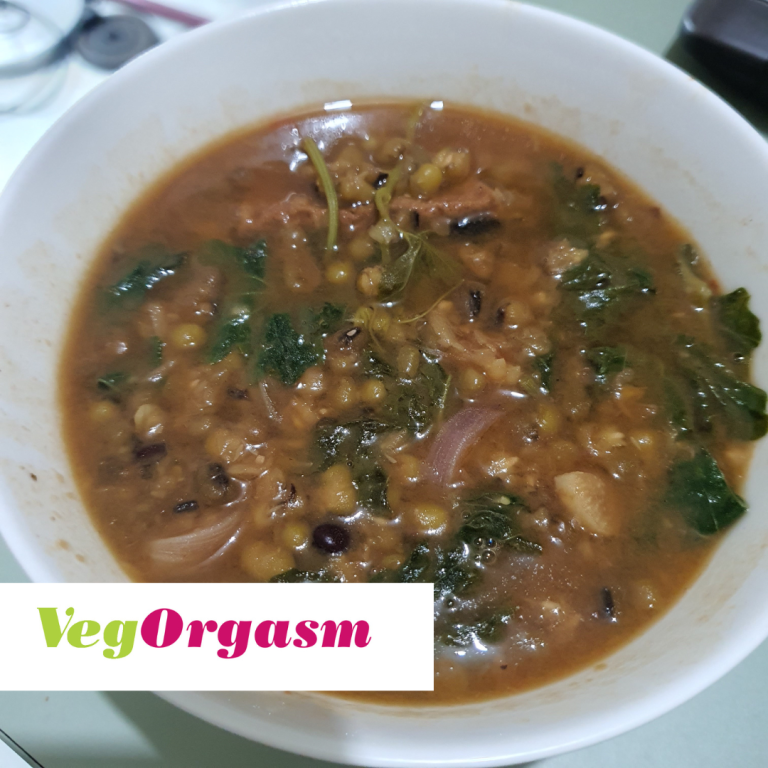
Disclaimer: I’ve always detested lugaw. It’s just rice, water, and salt and bits of long grain or sticky rice floating in a bowl of water is not exactly my idea of a good meal.
However, despite not liking lugaw, I decided to give it a try. It’s not rocket science. What could be so complicated with these three base ingredients? If I could veganise other popular Filipino food – why not lugaw? As soon as I finished that sentence in my head, my enthusiasm was quickly stymied by the rice to water ratio.
How many cups of water should I use? Will three cups of water be enough to turn two cups of rice into a watery bowl of congee? I let the idea percolate for about a year. Then I came across Agot Isidro’s Twitter post on how to make lugaw:
Sauté ginger and garlic, add shiitake & vegan patis. Cook 3-5 min. add broth (I use fake chix cubes w/ water. Boil, then add oats. Season to your liking. Cut tofu cubes bite size, then fry.
(I did not take a screenshot of the original post, sorry.)
It did not state a rice to water ratio but I figured it’s probably up to the cook. And as such – with rice cooker in my left hand and two cups of rice in the other, I poured five cups of water to see if it would work. Et voila, I cooked my first lugaw – and it was delicious – and this was at the height of the pandemic when I was digging deep into my savings – it was a life saver. An essential.

Researching on it, I found out that the savoury lugaw as we know is only a part of a large of porridge/congee dishes in the country. There’s ginataang mais, champorado, and lugaw’s cousins goto and arroz caldo. What’s great about it is you can customize it anyway you like. So for my second attempt, here’s what I did:
Instead of pouring/mixing the sautéed ginger, garlic, and mushrooms in with the boiling pot of rice, I just poured it over the bowl of cooked rice and garnished it with spring onions .

It really is simple – and aside from the drudgery of deep-frying cubed tofu in the middle of summer – it takes very little fuss and can be a fulfilling experience for classes A to E. No wonder the National Commission for Culture and the Arts has come out to say that lugaw is a symbol of Filipino culture.
It is so deep in our history that it’s even of the earliest dishes to be recorded. According to the 1613 Vocabulario de la Lengua Tagala by Fr. Pedro de San Buenaventura, lugaw is a rice dish mixed with milk, water, or broth.
It’s great to know that lugaw has a long and interesting history – and it appears it is making a mark once again.


